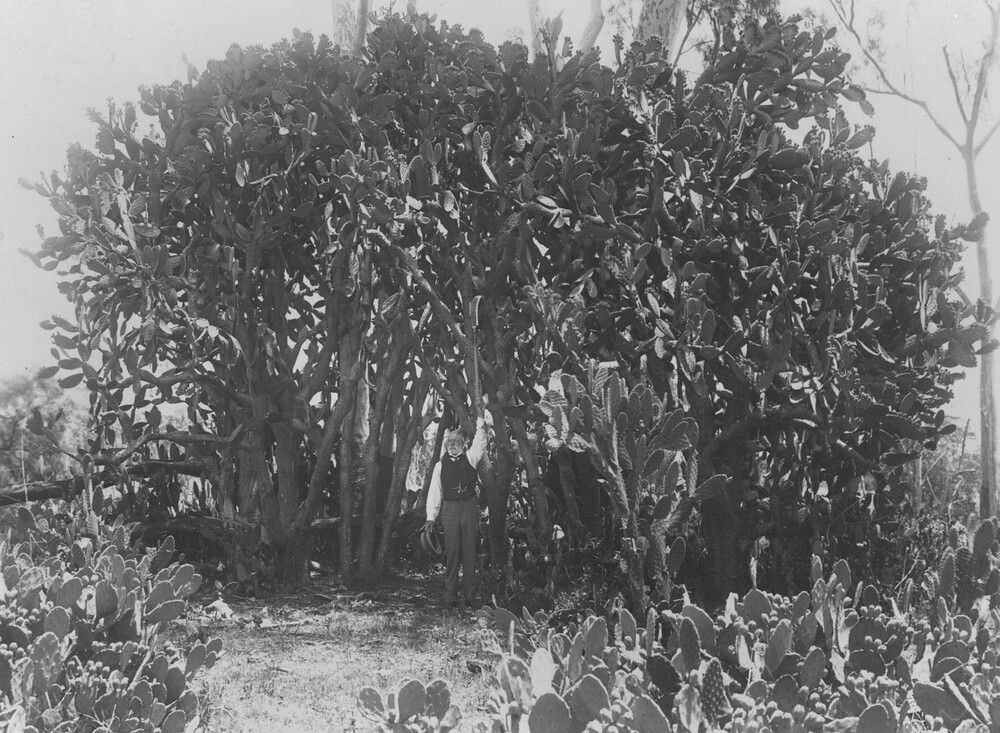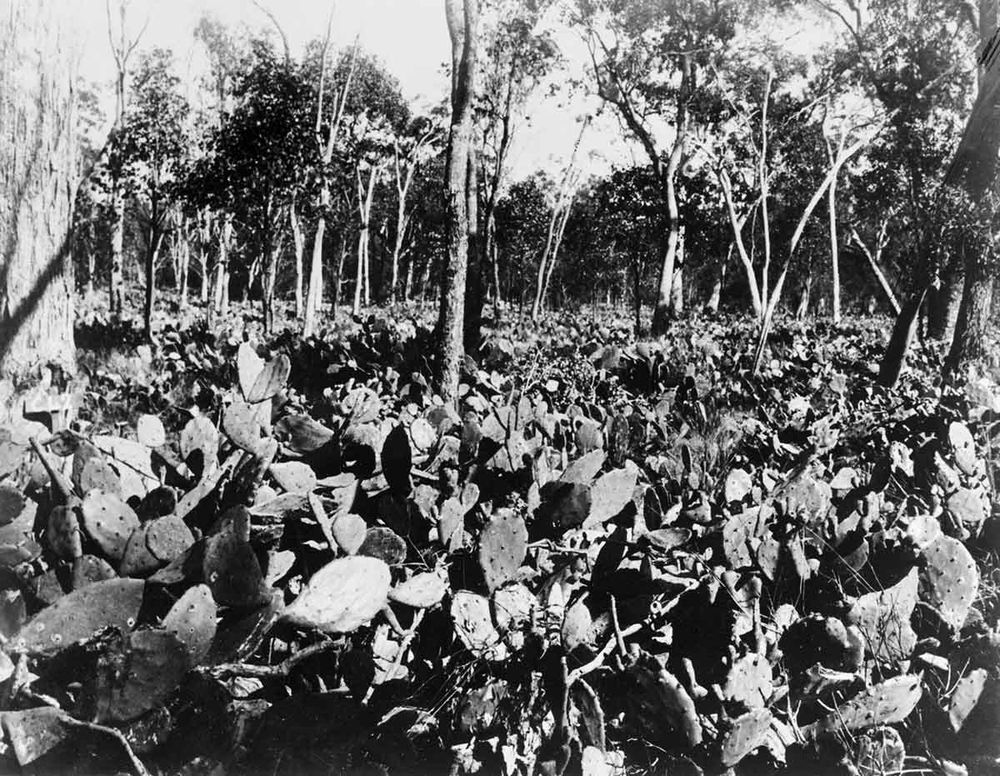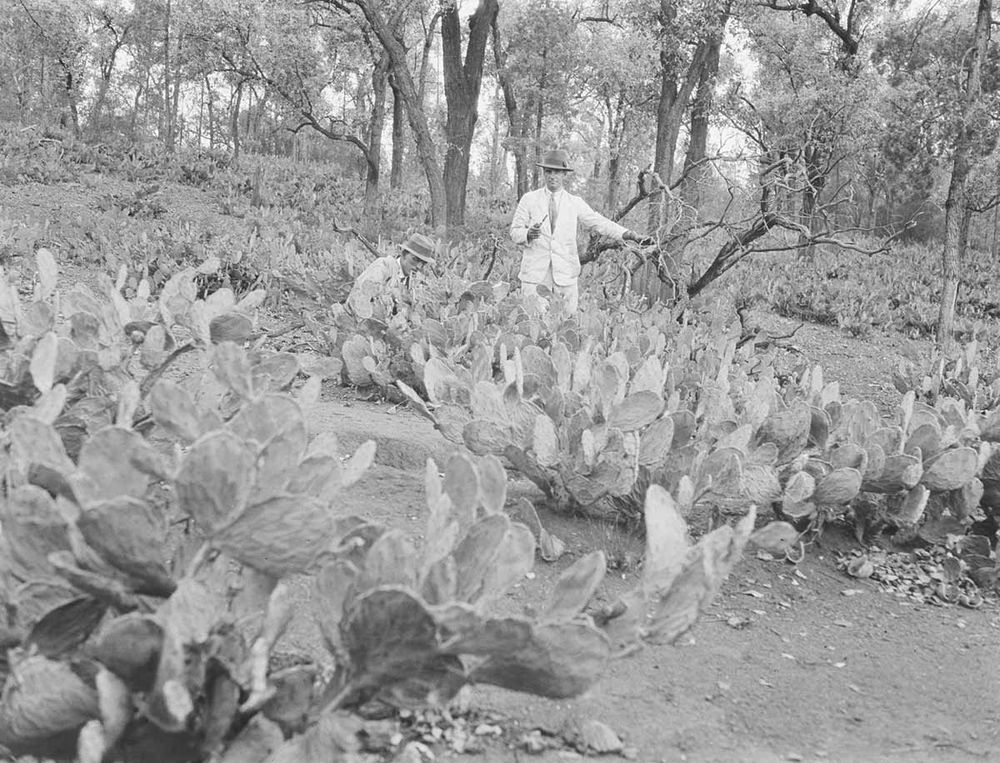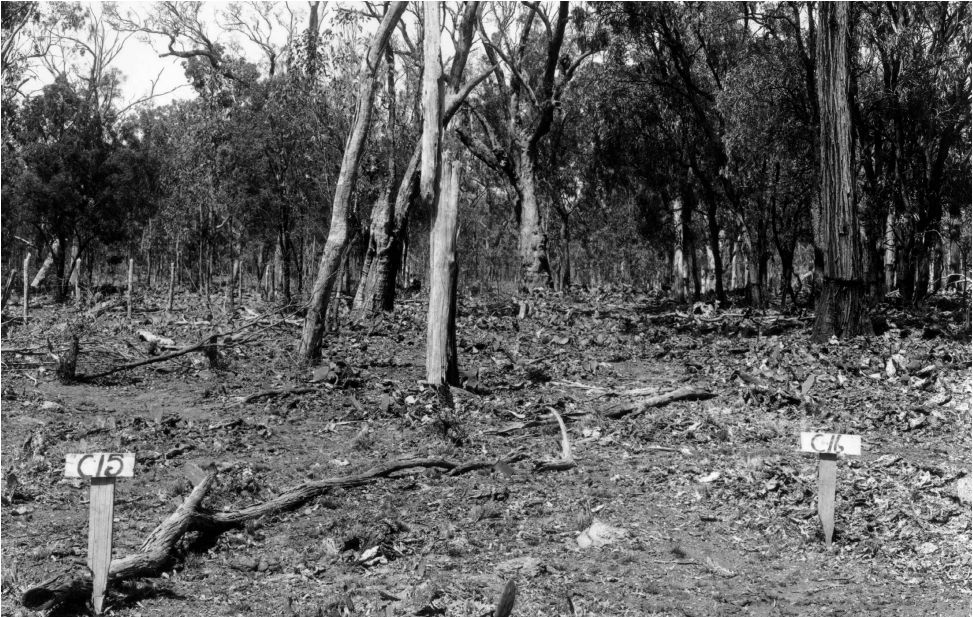A property in Chinchilla, Queensland, Australia, infested with prickly pear in 1928.
Cochineal insects were crushed to produce one of the brightest red dyes in the world.
Spain quickly established a monopoly on the distribution of the dye in Europe.

During the colonial period it became Mexicos second most valuable export after silver.
Prickly pear hedges on the property at Gracemere, Queensland, ca.
It is believed that the flood of 1893 spread seed and plant parts to many new areas.

By the 1880s, prickly pear was infesting farmland so badly that farmers began abandoning their land.
The reward was doubled in 1907.
Very tall prickly pear infestation in Helidon, Queensland, ca.

Photo:State Library of Queensland/Flickr
Prickly pear over 20 feet high in the Gogango Range, Central Queensland.
Photo:State Library of Queensland/Flickr
A stack of cactus to be burned.
The demand for arsenic rose leading to the creation of a new industryof arsenic mining in Queensland at Jibbenbar.

Explorer and author Michael Terry standing in a patch of prickly pear.
In 1914, the commission brought some of these promising insect species home.
One of these insects, the cochineal, was released in a field test.

Within three years, the insect had destroyed most of the prickly pear growth.
The board identifiedCactoblastis cactorum ,a moth, as the most effective control agent.
The female moth lays their eggs on the prickly pear plants.

Once the eggs hatch into larvae, they bore into the cactus pad to get at the edible interior.
There, they feast on the soft tissues until the cactus pad had been completely hollowed out.
A single caterpillar can consume an entire pad in one day.

When enough pads had been eaten out, the plants die.
Photo:Wikimedia
In 1925, some 3000Cactoblastis cactorumeggs were imported from Argentina.
Within a year, the stations had produced 10 million eggs which were distributed throughout the affected areas.

A further 2.2 billion eggs were distributed between 1927 and 1931.
The biological experiment at weed control proved to be a spectacular success.
Townships that had been stagnant in the 1920s sprang back to life.

Property infestation before the release of cactoblastis.
Photo: The State of Queensland, Department of Agriculture and Fisheries
The same property following cactoblastis release.
This developed into a new problem when the moth was released in the Caribbean.

Now some researchers suggest introducing a parasitic wasp to curb the spread ofCactoblastis cactorumin the United States.
References:#The prickly pear story# Prickly pear eradication,National Museum Australia

